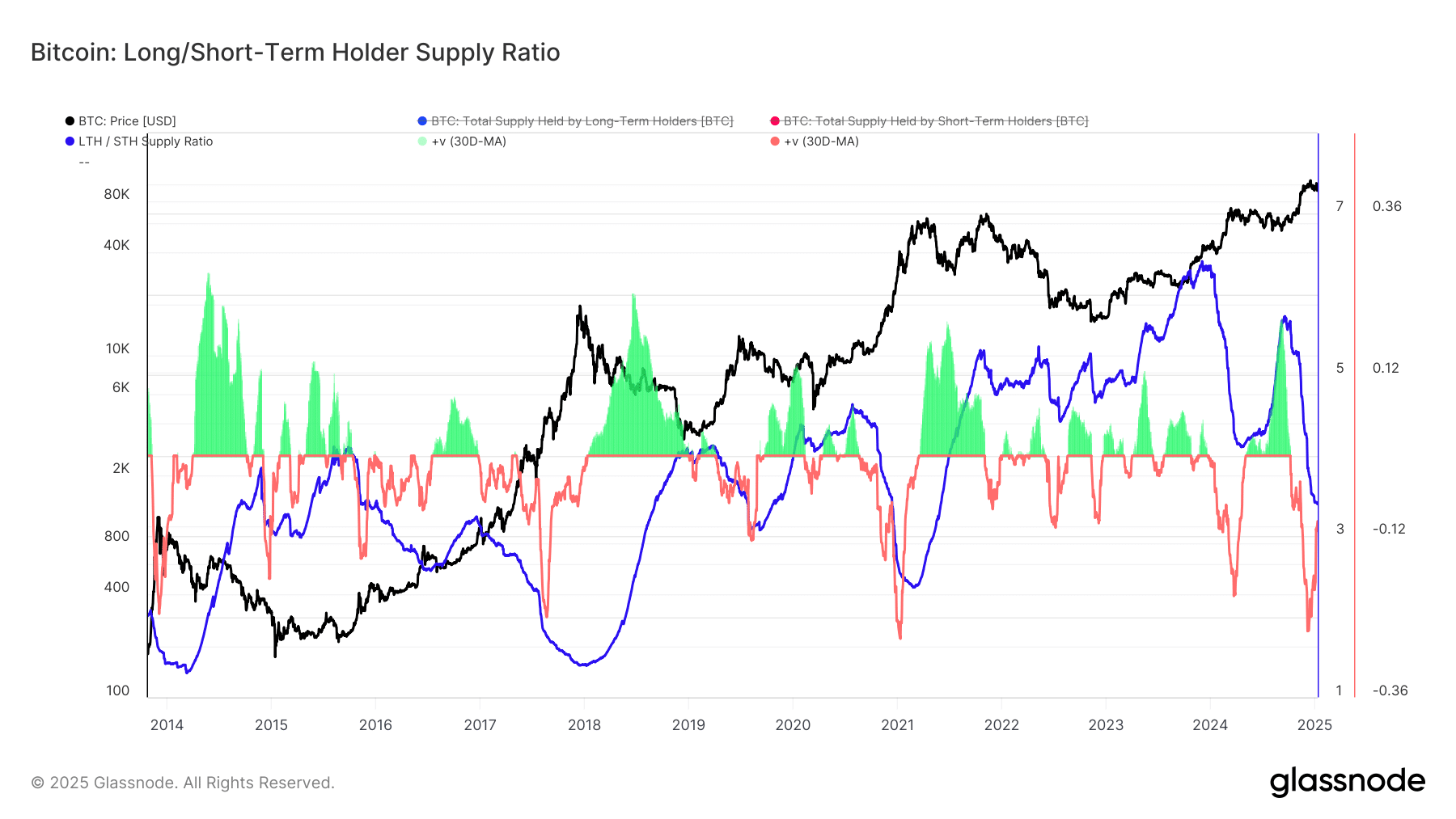- Bitcoin LTH Distributes Slower, Signaling Potential Shift in Market Sentiment
- Historical trends suggest that a reduction in LTH selling pressure often leads to upward price momentum.
At press time, the price of Bitcoin (BTC) appeared to be hovering around 12% below its all-time high, leaving many wondering about the future direction of the market. Despite this decline, LTHs continue to distribute their Bitcoin holdings, albeit at a slower pace.
In fact, on-chain data revealed a key change: while LTHs are still selling out, the distribution rate has started to slow down. More importantly, the 30-day percentage change in LTH supply suggests that this distribution cycle may have peaked, signaling that selling pressure may soon ease.
LTH distribution trends

Source: Glassnode
Recent data revealed that LTHs continued to distribute their Bitcoin, even with the price just 12% below its all-time high. This continued selling behavior means that these long-term holders are cautious, perhaps due to macroeconomic factors or a profit-taking strategy in uncertain market conditions. Despite this continued distribution, the pace of sales began to slow.
There is a decreasing 30-day change in LTH supply, suggesting that peak LTH selling pressure may have passed. This change can be attributed to improving market confidence and stabilizing external pressures, which may have eased some of the concerns behind the previous sell-off.
30-day percentage change in LTH supply
The 30-day percentage change in LTH supply measures the net accumulation or distribution of Bitcoin by LTHs over a rolling monthly period. When this measure increases, it often signals accumulation, while a decrease usually indicates active distribution.
The data revealed a plateau in LTH distribution, suggesting that the sales phase may be ending. Historically, such downturns precede periods of reduced selling pressure. As LTHs reduce distribution, the downward pressure on Bitcoin could ease, allowing for consolidation or a possible bullish reversal.
Is your wallet green? Check out the Bitcoin Profit Calculator
Comparison with previous cycles and potential implications
When comparing the current trend to previous cycles, it is clear that similar distribution slowdowns have marked the end of bear markets or the beginning of bull markets. In 2015, 2019 and 2020, slowdowns in LTH distribution were followed by a reduction in market volatility, paving the way for upward trends. During these periods, Bitcoin experienced greater stability, greater trust, and new influxes of new investors – all contributing to rising prices.
If this trend follows past cycles, Bitcoin could stabilize at its price at press time before moving higher. The change in LTH behavior and reduction in selling pressure could signal the start of a price rally. This could lead to bullish momentum or prolonged consolidation, depending on market conditions.
As history has shown, such moments of reduced selling pressure often pave the way for Bitcoin to reach new highs. However, it remains to be seen whether the market will follow this trend again.

